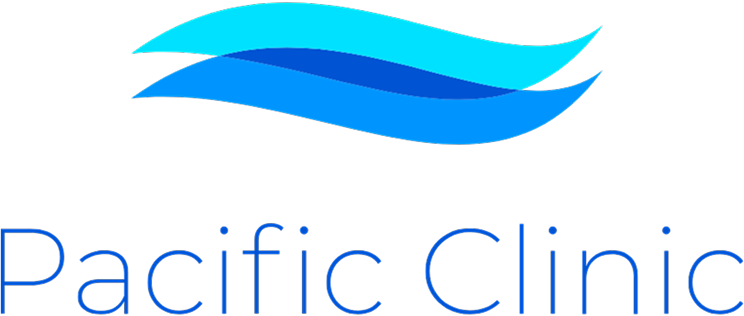Tendonitis Treatment in Bellevue, WA
● Heal Your Tendon Pain Naturally

The Benefits of PRP for Tendonitis
Chronic tendon injuries can severely limit your mobility and enjoyment of life. At Pacific Clinic in Bellevue, our innovative approach to tendonitis offers significant advantages:
- Stimulates your body's natural healing processes
- Addresses the underlying cause, not just symptoms
- Reduces inflammation and pain without steroids
- Improves tendon strength and function
- No downtime after treatment
- Avoids the risks and recovery of surgical intervention
- Provides lasting relief for chronic cases
What is Tendonitis?
Tendonitis is the inflammation or irritation of a tendon – the thick fibrous cords that attach muscle to bone. This condition causes pain and tenderness just outside a joint, making movement difficult and uncomfortable.
Types of Tendon Injuries
- Acute Tendonitis: Sudden inflammation caused by a specific injury or overuse over a short period
- Chronic Tendonitis/Tendinosis: Long-term degeneration of the tendon with failed healing
- Tendon Tears: Partial or complete ruptures of tendon fibers
Common Forms of Tendonitis
- Tennis Elbow: Pain on the outside of the elbow and forearm
- Golfer’s Elbow: Pain on the inside of the elbow and forearm
- Achilles Tendonitis: Pain at the back of the heel and ankle
- Rotator Cuff Tendonitis: Pain in the shoulder, especially with overhead movements
- Patellar Tendonitis: Pain at the front of the knee, below the kneecap
- De Quervain’s Tenosynovitis: Pain at the wrist and base of the thumb
- Plantar Fasciitis: Pain in the arch and heel of the foot
Traditional treatments like rest, physical therapy, and anti-inflammatory medications often provide only temporary relief, especially for chronic cases. At Pacific Clinic, our regenerative approach with PRP therapy addresses the underlying tendon damage for more comprehensive healing.
Our Tendonitis Treatments

PRP Therapy for Tendon Injuries
Platelet-Rich Plasma (PRP) therapy harnesses your body’s own healing capabilities. This innovative treatment begins with drawing a small amount of your blood, which is then processed in a specialized centrifuge to concentrate the platelets – cells rich in growth factors and bioactive proteins essential to healing. Our physicians recognize not all PRP is the same, hence our clinic uses the current top of the line PRP kit to process your blood & achieve the highest quality & concentration of PRP.
The resulting PRP contains 5-10 times the normal concentration of platelets and growth factors. When precisely injected into the damaged tendon area by our experienced physicians, these concentrated healing factors work to:
- Stimulate the production of new collagen, the main building block of tendons
- Enhance blood vessel formation to improve blood supply to the injured area
- Recruit stem cells to the site for optimal tissue regeneration
- Modulate inflammation to create an optimal healing environment
- Promote proper alignment of new tendon fibers for improved strength
Unlike cortisone injections, which may provide temporary relief but can weaken tendon tissue over time, PRP therapy addresses the root cause of tendon pain by actually healing the damaged tissue.

Comprehensive Tendon Care Approach
At Pacific Clinic, we recognize that optimal tendon healing requires more than just an injection. Our comprehensive approach to tendonitis combines PRP therapy with additional strategies:
- Precise Diagnostic Assessment: Thorough evaluation to identify the exact location and extent of tendon damage
- Customized PRP Formulations: Preparation techniques tailored to your specific tendon condition
- Healite II Therapy: Medical-grade LED light therapy used post-injection to accelerate healing, reduce inflammation, and improve tissue recovery time
- Follow-up Care: Monitoring of your progress to ensure optimal outcomes
This multifaceted approach ensures that we address your immediate tendon pain and create the conditions for long-term healing.

The Tendonitis Treatment Process
1. Comprehensive Evaluation
2. Treatment Planning
3. The PRP Procedure
4. Recovery and Results
After your PRP treatment, you may experience mild soreness at the injection site for 24-48 hours, which is actually a positive sign that the healing process has been initiated. We recommend limiting strenuous activities involving the treated tendon for a few days to a week, depending on the specific tendon treated, but most patients can return to normal daily activities immediately.
To support your recovery, Healite II low-level light therapy may be applied post-treatment. This hands-free LED system enhances blood flow and cellular repair, helping reduce post-procedural inflammation and supporting faster tissue regeneration.
Most patients begin to notice improvement in pain and function within 2–4 weeks, with continued improvement for up to 3–6 months.
PRP Treatment for Specific Tendonitis Conditions
Tennis and Golfer's Elbow
PRP therapy is particularly effective for these common elbow tendon conditions. The treatment can help heal the damaged extensor or flexor tendons, reducing pain and restoring normal function. Many patients with chronic elbow pain that hasn’t responded to rest, physical therapy, or cortisone injections find significant relief with PRP.
Rotator Cuff Tendonitis
Achilles Tendonitis
Patellar Tendonitis (Jumper's Knee)
Plantar Fasciitis
How PRP Compares to Other Tendonitis Treatments
When considering treatment options for tendonitis, it’s helpful to understand how PRP therapy compares to other approaches:
PRP Therapy
How it works: Uses your body’s own healing factors to stimulate tissue repair
Treatment frequency: Typically 1-3 treatments with long-lasting results
Downtime: Minimal, usually just a few days of reduced activity
Side effects: Minimal; temporary soreness at injection site
Best for: Chronic tendonitis that hasn’t responded to conservative care
Rest and Physical Therapy
How it works: Allows natural healing while strengthening surrounding muscles
Treatment frequency: Multiple sessions over weeks to months
Best for: Mild to moderate cases, especially acute injuries
Cortisone Injections
How it works: Reduces inflammation through powerful anti-inflammatory medication
Treatment frequency: Limited to 2-3 injections per year
Side effects: May weaken tendon tissue with repeated use
Best for: Short-term relief of severe inflammation
What Our Patients Say
Sarah M., Bellevue
James T., Seattle
Frequently Asked Questions
Is PRP therapy for tendonitis painful?
How many PRP treatments will I need for tendonitis?
How soon will I notice results from PRP therapy for tendonitis?
Can I resume normal activities after PRP treatment for tendonitis?
Why is PRP better than cortisone for tendonitis?
Heal Your Tendons, Restore Your Life
Contact Us
Phone
Address
1600 116th Ave NE #104
Bellevue, WA 98004
